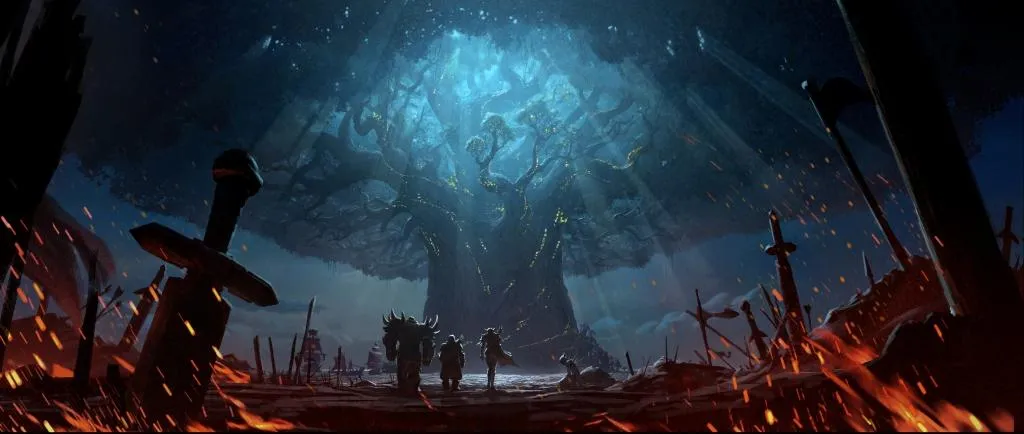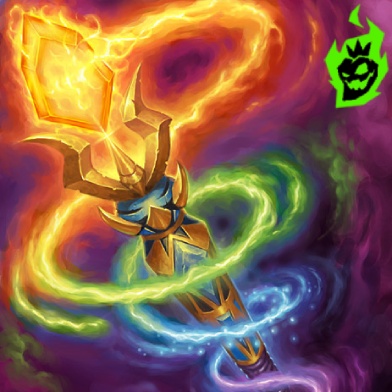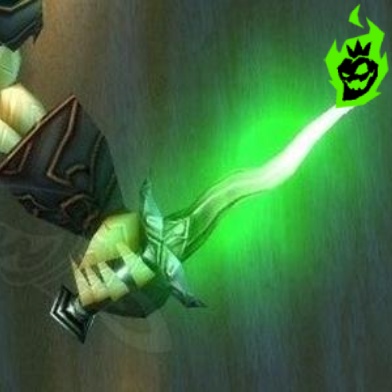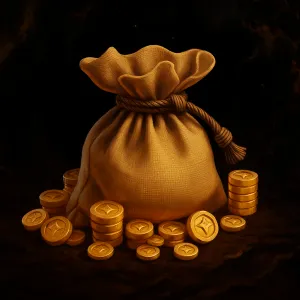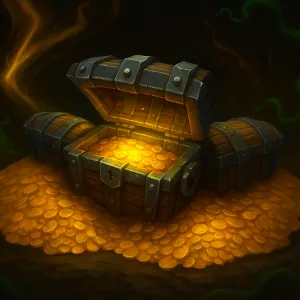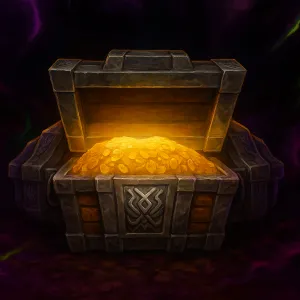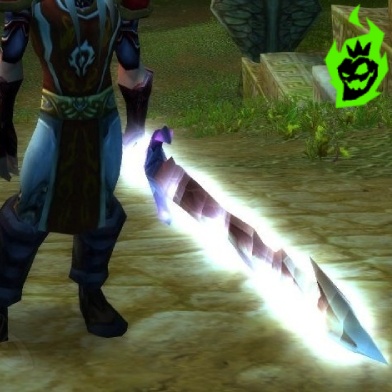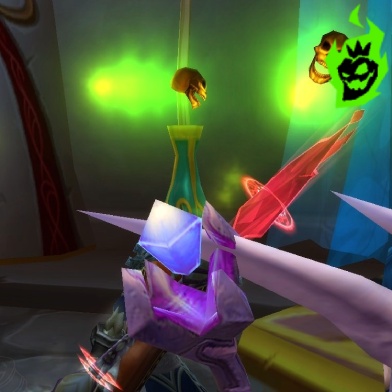Enchanting Guide in WoW Classic
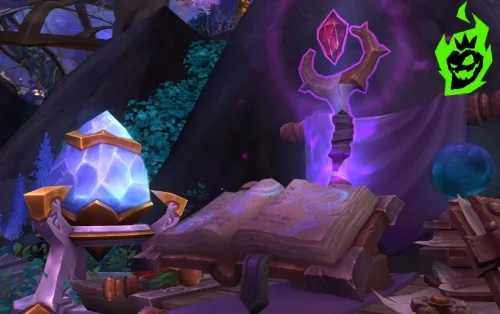
In World of Warcraft Classic, enchanting is one of the few jobs that can both make you gold and make your character better at the same time. I’ve always liked the idea of giving gear extra stats to make it stronger. This trade skill is all about taking magical elements from armor and weapons to make strong enchants. You can make this choice if you want a steady source of income and the freedom that comes with being your own boss. Enchanting gives you ways to improve the performance of a lot of different pieces of gear, as well as the ability to remove enchantments and gather materials from unwanted things. The best part is that buyers are usually willing to pay a lot for things and weapons that have useful buffs like Crusader or Spell Power.
As they level up, I’ve seen a lot of fighters and paladins change their weapons, and they always want weapons with better stats or procs. That gives you a steady flow of gold, whether you stand in Ironforge or Orgrimmar and offer your skills or just wait for other people in your group to ask about a new enchantment. In the end, WoW Classic Enchanting is a rewarding path that helps you play a bigger part in groups, makes your gear stronger, and gives you a steady way to make money while you’re exploring Azeroth.
Key Materials and Vendor Tips for Leveling Enchanting
It’s important to get a few basic things together before going on to the next level of skill in WoW Classic. More Magic Essence, More Astral Essence, More Mystic Essence, and More Eternal Essence are among these. They are Strange Dust, Soul Dust, Vision Dust, Dream Dust, and Illusion Dust. You can quickly get these things by disenchanting any trash greens or extra gear you find in dungeons like Uldaman, Razorfen Downs (RFD), and SM. As I level up from 1 to 60, I usually put all of my unwanted stuff in my bank so that I have plenty when I start to focus on my Enchanting skill.
For things to go smoothly, you need certain WoW Classic vendor-based recipes and rod parts. The Arcanite Rod recipe, which is sold by certain people in Moonglade, is a good example. Some other important recipes are Enchant Bracer (from Darnassus) for less strength, Enchant Cloak (from Moonglade) for better defense, and Enchant Shield (also from Darnassus) for more stamina. Because these recipes are often hard to find, I have camped out in front of the vendor for up to an hour if other players are on the same task. Right now, you need to be patient, but the end result is worth it because these numbers are important for the skill path.
If you want to buy a lot of Dust and Essences from the Auction House in WoW Classic, having a lot of gold saved up is very helpful. When I’m missing certain materials, I like to mix my own dungeon farming with some targeted buying. By using this method, I can lower my total costs. It is helpful to check the market every day, or even more than once. This is because some things are harder to find and sell for more money. Setting a new level goes much more quickly once you have enough Dust and Essences.
Fundamentals of Disenchanting and Early Skill Ups
The most important part of WoW Classic Enchanting is disenchanting. It lets me turn useless blue, green, and epic gear into useful things like Strange Dust, Magic Essence, and Small Radiant Shard. This stuff helps me get from being a student to an artist. For me, making it a habit to get as many bind-on-equip things as I can helps me avoid spending too much gold. Even if the things are worthless to the seller at first, they become useful materials when they are broken down.
Between skill 1 and 50 or 60, I usually focus on small enchants like Enchant Bracer – small Health. This method is easy to follow because it only takes Strange Dust, which can be found in many low-level items. You could also make a Lesser Magic Wand, which needs Simple Wood and Strange Dust, but I like spamming bracer enchants because it increases skill at a good rate. Most of the time, disenchanting a brand-new set of gear from leveling gives me all the Dust I need for these small enchants.
When my skill level goes above 50 in WoW Classic, I add new recipes like “Enchant Bracer – Minor Stamina” or start making “Greater Magic Wands.” Many leveling users use the wands, so I sometimes sell them to get a small portion of what I paid for them. I switch to a different low-level mix that stays yellow or orange when skill-ups start to slow down. I am usually ready to train Journeyman Enchanting by the time I hit about level 100 and a skill.
Journeyman to Expert: Smooth Progression Strategies
Once you have about 100 skill in Enchanting in WoW Classic, you can train with a special Enchanting Trainer, who will then let you reach Journeyman levels. I go to Stormwind a lot, even though Orgrimmar has its own Horde trainee. You need to learn new recipes that call for Soul Dust, Vision Dust, or Greater Magic Essence. The fastest way to raise your overall skill level is to use recipes that stay green across a wide range of skill levels.
I like Enchant Bracer – Lesser Stamina or other moderate-level recipes that depend on Soul Dust from level 100 to about 135. You can get a good amount of dust by disenchanting mid-level things in Blackfathom Deeps, Shadowfang Keep, or Stockades. This is when I think you might make your first Runed Silver Rod or even a Runed Golden Rod. To finish the enchanting process for many higher-tier spells, you need a more advanced rod, so these rods are still necessary.
To get from 135 to 200 in WoW Classic, you can use magic like “Enchant Bracer” for more strength, “Enchant Chest” for more health, or the common “Greater Magic Wand” path. One of my favorite options is Bracer – Strength because it helps melee classes grow up. Here, the amount of gold spent on Vision Dust can go up, so keep an eye on the Auction House or actively gather dungeon loot. Spread out your enchanting efforts by completing them in cities, and you might also get clients who will pay extra for a quick bracer or chest enchant.
Reaching Artisan: The Journey into Uldaman
To go from about 200 skills to 225 skills, you need WoW Classic Expert Enchanting. To get to Artisan (up to 300 skills), you need to talk to Annora, a special teacher in Uldaman. That teacher lives deep inside the instance, and you need to get to the hallway near the scorpion packs in the back. If your character is level 60, it will be easier to get past most of the leaders, but you may have to fight a few of them along the way. A druid or rogue with lower levels might still be able to sneak through, but I usually wait until I’m sure I can handle the last scorpion area before I do it.
I learn important recipes from Annora that raise my skill level above 225 and up to 300. If I have enough gold on hand, she also sells some recipes. The chemicals should all be brought on the same trip. To use the Enchant Shield – Greater Stamina skill a lot, I make sure I have a lot of Vision Dust and Greater Mystic Essence in my bags. This is because sellers in Darnassus sell it. That makes sure that when I leave Uldaman, my skill will have gone up a lot, hopefully to at least 250.
Some WoW Classic enchanting experts focus on Enchant Cloak (Higher Defense) or Enchant Chest (Higher Health) between levels 250 and 300. Both need a good amount of Vision Dust or Dream Dust, so getting a lot of it ahead of time is a good idea. For the end goal of 300 skills, it’s well worth the trouble to spam these recipes over and over again. It makes me feel good to leave Uldaman for the last time because it means the job is almost done.
High-Level Enchants and Earning Gold
When your Enchanting skill reaches 300, you can use the most sought-after recipes, such as weapon procs like Crusader, 15 Agility, Spell Power on gloves, and big stats on chest items. Raids like Molten Core, Onyxia, and Blackwing Lair may have these enchanting recipes. High-level dungeons like Stratholme, Scholomance, and Dire Maul may also have them. Out of these rare items, Crusader stands out because it gives a huge boost to Strength. A lot of people also like Spell Power recipes because they make casters stronger in endgame material.
That’s when someone looks for an enchanter—when they get a new epic or improve their tier pieces. This is a great chance to ask for a nice tip. During my travels, I often stop in Ironforge or Orgrimmar on days when the world starts over or after raids. As night falls, a lot of players roam the big towns looking for quick enchants. Over time, I’ve built a name on my server, which makes people want to buy gear from me again and again. It helps to be one of the few with well-known formulas like Weapon – Agility or Healing Power. Word of mouth is also very strong in WoW Classic.
At max skill, disenchanting is still a good way to get extra gold. Many blues from dungeons drop Small Radiant Shards, which can sell for more than what they’re worth at the dealer. For some level ranges, those bits could even fetch twice or three times what they sell for in shops. Run mid-tier instances, collect the things bosses drop, and break them down. This often makes me money. That method works well for enchanters who want a safe way to gather valuable dust or essences while also building a steady bank roll.
Final Thoughts on Mastering Enchanting in WoW Classic
I’ve always enjoyed enchanting in World of Warcraft Classic because the job is a fun mix of gear upgrades, gold-making methods, and working well with dungeon runs. To get from level 1 to level 300, you have to travel the world and collect rare recipes. You also have to chase down traders who sell formulas in small amounts and even go into a dungeon like Uldaman to get more advanced training. You might have to spend a lot of gold to buy a lot of things at the Auction House, but you’ll gain respect from your peers and be able to improve your gear without any problems.
I have always told my fellow casters and melee fighters that they should think about pairing Enchanting with a job that involves gathering or a class style that focuses on farming dungeons. In AoE farming, paladins and mages are very good at getting a steady flow of green gear that can be disenchanting. When warriors run the same raids or dungeon groups over and over, they often end up with bags full of drops they don’t want. Each piece adds to your collection of Dust and Essences, which can then be used to make profitable or useful enchants. Finding rare formulas like Crusader or Agility is still a reason to go back to older material, even after training.
Enchanting is still useful to me whether I’m getting ready for a new raid or just helping a friend power up their new epic. The trip is worth it because of the sense of usefulness and the steady tips from happy players. With enough planning, skilled use of vendor supply, and smart use of dungeon farming, Enchanting offers a never-ending chance to make progress and money. The profession’s unique focus on making gear stronger with magical upgrades has made it a mainstay on many characters, and I still suggest it to anyone in WoW Classic who wants to make money and have fun at the same time.
